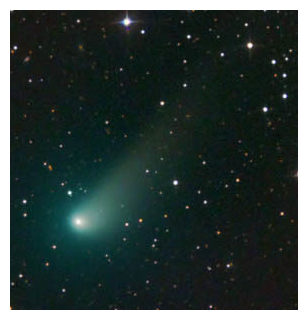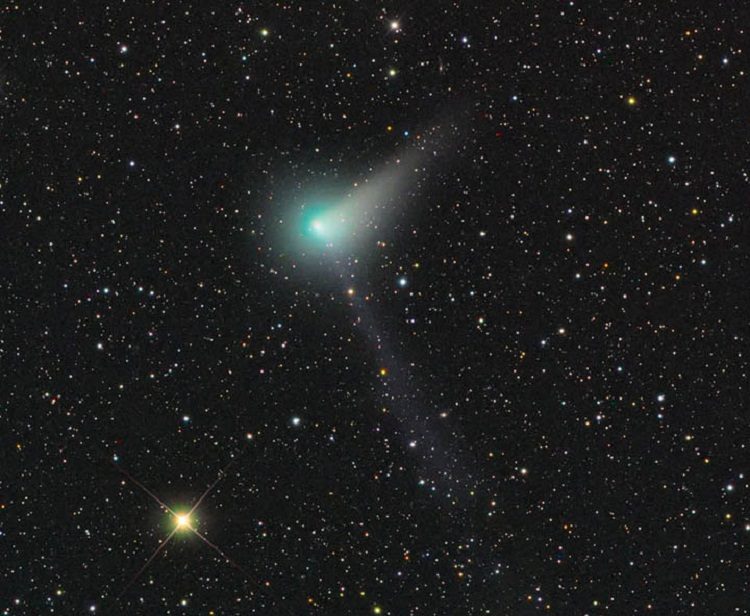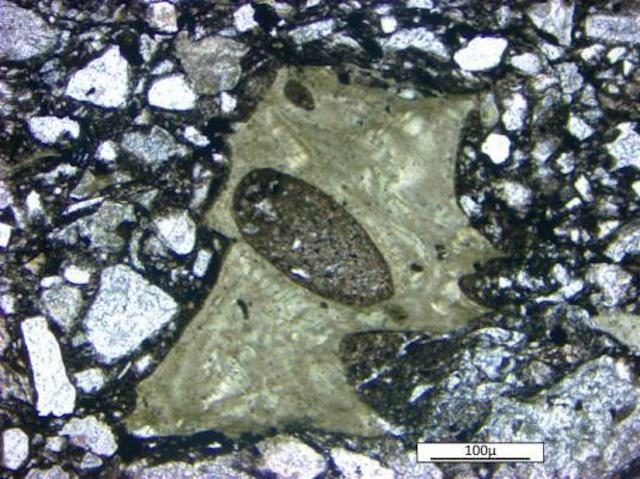
© Chris SchurComet Johnson (C/2015 V2) glowed pale green and displayed a short tail on April 2nd.
Nothing against Giacobini, Kresak, Mrkos, and Pajdusakova, but this is one comet name I can pronounce with confidence. Even better, it's been humming along very well, thank you, while waiting for its turn at center stage.
At magnitude +8.5,
Comet Johnson (C/2015 V2) is already bright enough to join the ranks of this year's
band of binocular comets: NEOWISE (C/2016 U1), 45P/Honda-Mrkos-Pajdusakova, 2P/Encke, 41P/Tuttle-Giacobini-Kresak, Lovejoy (C/2017 E4), and PanSTARRS (C/2015 ER61). Comet watchers appreciate the bonanza; we've been happily toting out scopes and binoculars to follow the progress of each in its turn.
As the Moon toddles east and wanes, dark skies return as soon as May 12th. The timing couldn't be better, with Comet Johnson making a steep dive through the constellation of Boötes high in the southeastern sky at nightfall while also reaching peak brightness.
I last caught sight of the comet shortly just before dawn on May 6th. In 10×50 binoculars, Johnson was a faint, patchy glow in Canes Venatici. The view in my 15-inch reflector was more satisfying. At 76×, Johnson displayed a moderately condensed coma about 8′ across with a ¾° long broad, diffuse tail pointing northwest. Upping the magnification to 286×, I could see a tiny, almost stellar nucleus of magnitude +13.5 at coma center.

© Rolando LigustriWhat a little sunshine won't do. By May 1st, Comet Johnson had developed a long, faint ion tail pointing straight away from the Sun as well as a stubby dust tail.
Studying a comet's nucleus is a strange experience. At low magnification, it might appear fairly bright, but the more you magnify, the smaller and fainter the nucleus (pseudo-nucleus actually, since the true nucleus is hidden by reflective dust) becomes until you're staring at just a faint pinprick of light at the heart of a dusty maelstrom.

Comment: Chances are this was yet another commercial plane 'taken out' by the increasingly extreme weather on our planet, or, as a result of one of the many exploding space rocks that have been seen in our skies.